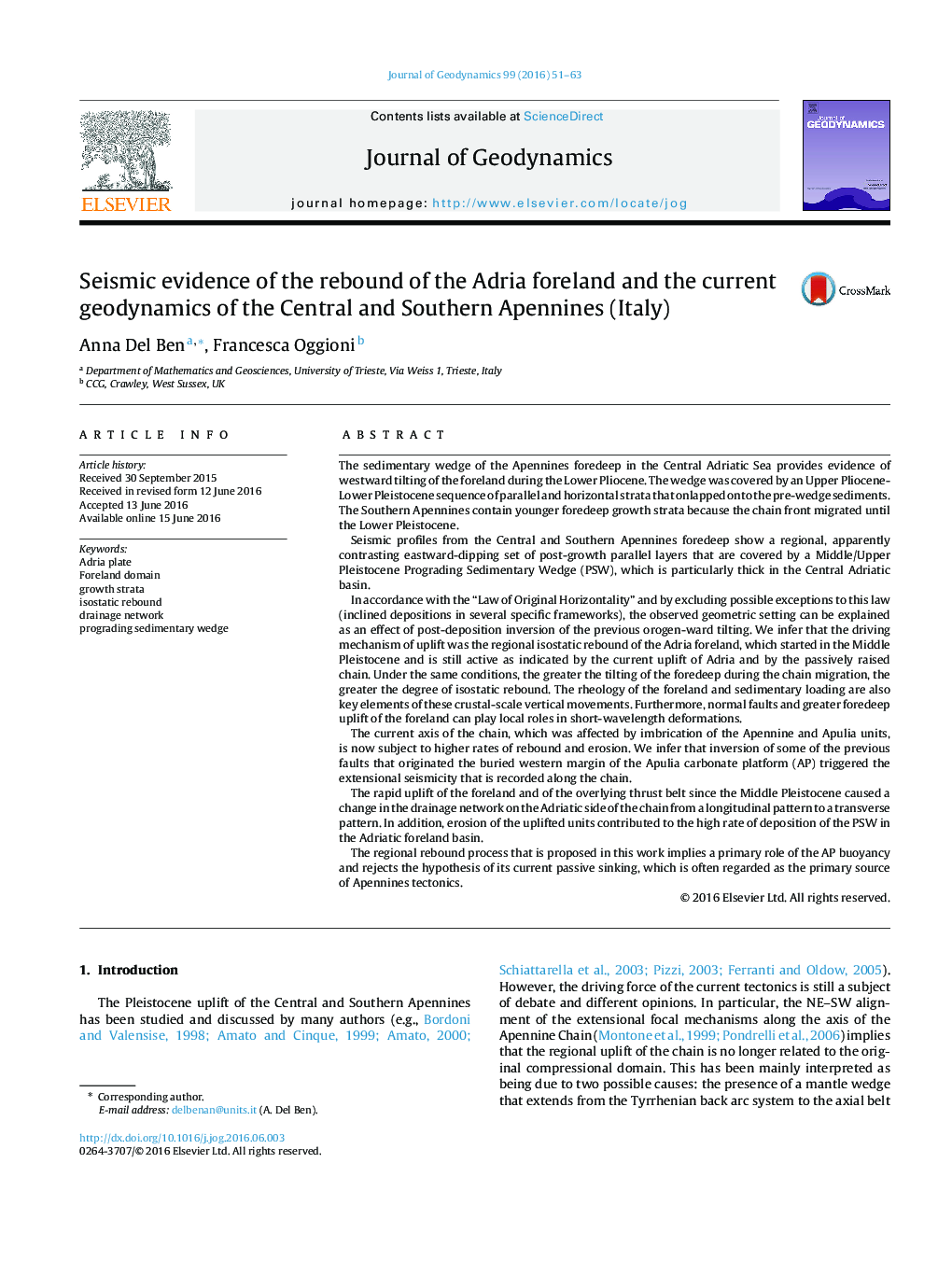| کد مقاله | کد نشریه | سال انتشار | مقاله انگلیسی | نسخه تمام متن |
|---|---|---|---|---|
| 4687951 | 1635751 | 2016 | 13 صفحه PDF | دانلود رایگان |

• The Central/Southern Adria foreland experienced unloading since the Middle Pleistocene which gave rise to a rapid rebound.
• The rebound produced eastward tilting of the foreland and the overlying chain.
• In the foredeep the rebound is evidenced by the regional eastward-dipping of the parallel horizons above the growth strata.
• A thick prograding sequence originated from high erosional rate.
• The Adria rebound seems to be a main event affecting the current geodynamics of the Central Southern Apennines.
The sedimentary wedge of the Apennines foredeep in the Central Adriatic Sea provides evidence of westward tilting of the foreland during the Lower Pliocene. The wedge was covered by an Upper Pliocene-Lower Pleistocene sequence of parallel and horizontal strata that onlapped onto the pre-wedge sediments. The Southern Apennines contain younger foredeep growth strata because the chain front migrated until the Lower Pleistocene.Seismic profiles from the Central and Southern Apennines foredeep show a regional, apparently contrasting eastward-dipping set of post-growth parallel layers that are covered by a Middle/Upper Pleistocene Prograding Sedimentary Wedge (PSW), which is particularly thick in the Central Adriatic basin.In accordance with the “Law of Original Horizontality” and by excluding possible exceptions to this law (inclined depositions in several specific frameworks), the observed geometric setting can be explained as an effect of post-deposition inversion of the previous orogen-ward tilting. We infer that the driving mechanism of uplift was the regional isostatic rebound of the Adria foreland, which started in the Middle Pleistocene and is still active as indicated by the current uplift of Adria and by the passively raised chain. Under the same conditions, the greater the tilting of the foredeep during the chain migration, the greater the degree of isostatic rebound. The rheology of the foreland and sedimentary loading are also key elements of these crustal-scale vertical movements. Furthermore, normal faults and greater foredeep uplift of the foreland can play local roles in short-wavelength deformations.The current axis of the chain, which was affected by imbrication of the Apennine and Apulia units, is now subject to higher rates of rebound and erosion. We infer that inversion of some of the previous faults that originated the buried western margin of the Apulia carbonate platform (AP) triggered the extensional seismicity that is recorded along the chain.The rapid uplift of the foreland and of the overlying thrust belt since the Middle Pleistocene caused a change in the drainage network on the Adriatic side of the chain from a longitudinal pattern to a transverse pattern. In addition, erosion of the uplifted units contributed to the high rate of deposition of the PSW in the Adriatic foreland basin.The regional rebound process that is proposed in this work implies a primary role of the AP buoyancy and rejects the hypothesis of its current passive sinking, which is often regarded as the primary source of Apennines tectonics.
Journal: Journal of Geodynamics - Volume 99, September 2016, Pages 51–63